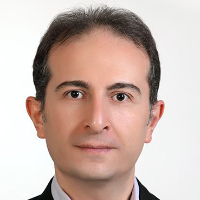Moisture Loss Kinetics Modeling during Deep-Fat Frying of Potato Strips Pretreated with Ultrasound and Microwave
Author(s):
Abstract:
Introduction
Deep-fat frying is a process of cooking foods through immersing them in edible oils at temperatures above the boiling point of water (150-200°C). During this complex unit operation, heat and mass transfer occur simultaneously.During frying, heat is transferred from edible oil to surface of the food and then transferred into it and at the same time, moisture is transferred from inside the food to outside.As a result of these phenomena and by continuing the process, food temperature increases and its moisture content decreases. This, in turn, creates favorable characteristics such as color, texture and taste of the product.Moisture content is one of the important features in the quality of fried products.In the frying process, moisture loss from food occurs by the mechanisms of molecular diffusion, capillary flow and pressure driven flow.The driving force of moisture loss is the partial water vapor pressure difference between the inside and the surface of the food product due to turning the water into vapor.Rate of moisture loss from the food during the frying process decreases exponentially with frying time and increases with increasing temperature.For information about therelationshipsbetweenvarious variables during the frying process, moisture loss kinetics modelingcan bea suitable steptowards improving thequality offried products.To our knowledge, there has been no study in literature associated with the effect of ultrasound and microwave on moisture loss during deep-fat frying of foods. This study aimed to evaluate the effect of these waves on moisture loss kinetics during frying of potato strips.Materials And Methods
Potatoes (Agria variety) were purchased from a local market and kept in a cold room at 0°C. A mixture of sunflower, soy and cottonseed oil (Behshahr Industrial company), was used for frying potato strips.Inthis study, effect ofultrasound pretreatment at frequencies of 28 and 40 kHz for 15 min and microwave pretreatment at powers of 3 and 6 W/g for 10 min on moisture content of the fried potato slices at 150, 170 and 190°C for 60, 120, 180 and 240 s was investigated.The moisture content of the samples was measured by drying them in a convection oven at 105°C until the weight was constant.Moisture loss experimental data during frying were fitted with six empirical models proposed in this study as well as the Ficks law of diffusion.The effective moisture diffusion coefficient was calculated based on the Fick's law. To calculate the effect of temperature on the effective moisture diffusion coefficient, the Arrhenius equation was used.Results And Discussion
By increasing frying temperature, moisture content of the potato slices decreased; however the decrease was not significant at a probability level of 5 percent. The positive effect of oil temperature on moisture loss during deep-fat frying of potato strips has been well documented. This is due to the high kinetic energy of water molecules at higher temperatures, leading to a rapid loss of moisture. The moisture loss by diffusion of water molecules as well as the oil uptake during the frying process lead to the formation of cracks in the structure of the solid food. This, in turn, leads to structural damages and significant changes in terms of structural characteristics including porosity.On the other hand, moisture content of the samples significantly decreased in an exponential manner by increasing the process time. Rapid moisture loss in the first moments of frying is associated with the removal of surface moisture. By decreasing surface moisture over time, the rate of moisture loss was reduced accordingly.Results also showed that both the ultrasound and microwave pretreatments at all the studied levels significantly reduced the final moisture content of the samples at a probability level of 5 percent. The difference between the samples pretreated with two ultrasound frequencies of 28 and 40 kHz was not significant (P > 0.05), but with increasing frequency of the pretreatment, the moisture content decreased to a greater extent. Lower final moisture contents of the samples pretreated with ultrasound were probably due to the creation of microscopic channels in the food structure, which may facilitate moisture loss during frying. On the other hand, application of microwave pretreatment at powers of 3 and 6 watts per gram, decreased initial moisture content of the samples by 38 and 80%, respectively. This resulted in significant (P Language:
Persian
Published:
Iranian Food Science and Technology Research Journal, Volume:12 Issue: 1, 2016
Pages:
109 to 126
magiran.com/p1576623
دانلود و مطالعه متن این مقاله با یکی از روشهای زیر امکان پذیر است:
اشتراک شخصی
با عضویت و پرداخت آنلاین حق اشتراک یکساله به مبلغ 1,390,000ريال میتوانید 70 عنوان مطلب دانلود کنید!
اشتراک سازمانی
به کتابخانه دانشگاه یا محل کار خود پیشنهاد کنید تا اشتراک سازمانی این پایگاه را برای دسترسی نامحدود همه کاربران به متن مطالب تهیه نمایند!
توجه!
- حق عضویت دریافتی صرف حمایت از نشریات عضو و نگهداری، تکمیل و توسعه مگیران میشود.
- پرداخت حق اشتراک و دانلود مقالات اجازه بازنشر آن در سایر رسانههای چاپی و دیجیتال را به کاربر نمیدهد.
دسترسی سراسری کاربران دانشگاه پیام نور!
اعضای هیئت علمی و دانشجویان دانشگاه پیام نور در سراسر کشور، در صورت ثبت نام با ایمیل دانشگاهی، تا پایان فروردین ماه 1403 به مقالات سایت دسترسی خواهند داشت!
In order to view content subscription is required
Personal subscription
Subscribe magiran.com for 70 € euros via PayPal and download 70 articles during a year.
Organization subscription
Please contact us to subscribe your university or library for unlimited access!



